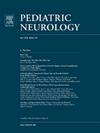Clinical Manifestations and Treatments of Patients With Tuberous Sclerosis With Subependymal Giant Cell Astrocytoma
IF 3.2
3区 医学
Q2 CLINICAL NEUROLOGY
引用次数: 0
Abstract
Background
This study aims to investigate the clinical and genetic characteristics of patients with tuberous sclerosis complex (TSC) with subependymal giant cell astrocytomas (SEGAs).
Methods
We conducted a retrospective study involving 263 patients with TSC, comparing clinical histories, genetic variants, and imaging data between patients with and without SEGAs. Additionally, we analyzed brain magnetic resonance imaging (MRI) findings of patients with TSC with SEGAs and evaluated the efficacy of everolimus in reducing SEGA volume.
Results
SEGA was identified in 34 (12.9%) patients with TSC. The prevalence of pathogenic TSC2 variants was significantly higher in patients with SEGAs compared with those without SEGA. Patients with SEGAs also exhibited increased frequencies of retinal hamartomas, renal cysts, and hepatic angiomyolipomas. SEGAs were present in the initial brain imaging of 28 (82.4%) patients. Everolimus significantly reduced SEGA volume, with a median reduction of 33.7%. The most substantial reduction occurred during the first year of treatment, with a median decrease of 28.1%.
Conclusions
This study highlights that patients TSC with SEGAs are more likely to harbor pathogenic variants in the TSC2 gene and present with extracerebral manifestations of TSC, including retinal hamartomas, renal cysts, and hepatic angiomyolipomas. Most SEGAs were detectable from the initial brain imaging, suggesting that their presence can often be anticipated at the time of diagnosis. Everolimus proved effective and safe in significantly reducing SEGA volume during the first year of treatment in pediatric patients, although the rate of volume reduction decreased in subsequent years.
结节性硬化症合并室管膜下巨细胞星形细胞瘤的临床表现及治疗
本研究旨在探讨结节性硬化症(TSC)合并室管膜下巨细胞星形细胞瘤(SEGAs)患者的临床和遗传特征。方法对263例TSC患者进行回顾性研究,比较有和无SEGAs患者的临床病史、遗传变异和影像学资料。此外,我们分析了伴有SEGA的TSC患者的脑磁共振成像(MRI)结果,并评估了依维莫司减少SEGA体积的疗效。结果34例(12.9%)TSC患者存在sega。与没有SEGA的患者相比,SEGA患者中致病性TSC2变异的患病率明显更高。SEGAs患者还表现出视网膜错构瘤、肾囊肿和肝血管平滑肌脂肪瘤的发生率增加。在28例(82.4%)患者的初始脑成像中存在SEGAs。依维莫司显著减少SEGA体积,中位减少33.7%。最显著的下降发生在治疗的第一年,中位数下降28.1%。结论:伴有SEGAs的TSC患者更容易携带TSC2基因的致病变异,并表现为TSC的脑外表现,包括视网膜错构瘤、肾囊肿和肝血管平滑肌脂肪瘤。大多数sega从最初的脑成像中可以检测到,这表明它们的存在通常可以在诊断时预测到。依维莫司在儿童患者治疗的第一年被证明是有效和安全的,可以显著减少SEGA体积,尽管体积减少的速度在随后的几年中有所下降。
本文章由计算机程序翻译,如有差异,请以英文原文为准。
求助全文
约1分钟内获得全文
求助全文
来源期刊

Pediatric neurology
医学-临床神经学
CiteScore
4.80
自引率
2.60%
发文量
176
审稿时长
78 days
期刊介绍:
Pediatric Neurology publishes timely peer-reviewed clinical and research articles covering all aspects of the developing nervous system.
Pediatric Neurology features up-to-the-minute publication of the latest advances in the diagnosis, management, and treatment of pediatric neurologic disorders. The journal''s editor, E. Steve Roach, in conjunction with the team of Associate Editors, heads an internationally recognized editorial board, ensuring the most authoritative and extensive coverage of the field. Among the topics covered are: epilepsy, mitochondrial diseases, congenital malformations, chromosomopathies, peripheral neuropathies, perinatal and childhood stroke, cerebral palsy, as well as other diseases affecting the developing nervous system.
 求助内容:
求助内容: 应助结果提醒方式:
应助结果提醒方式:


